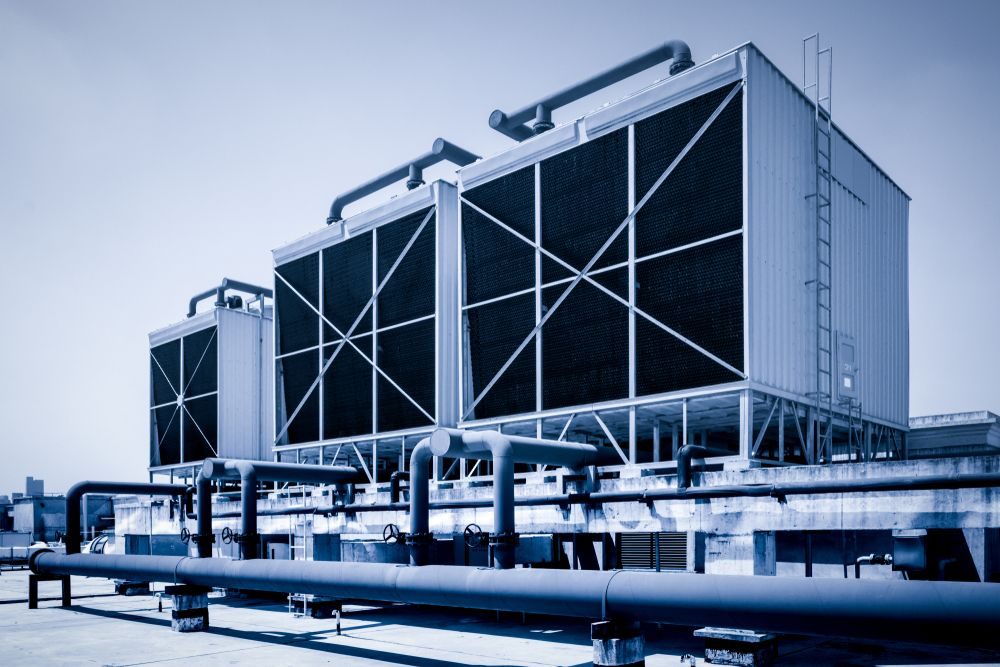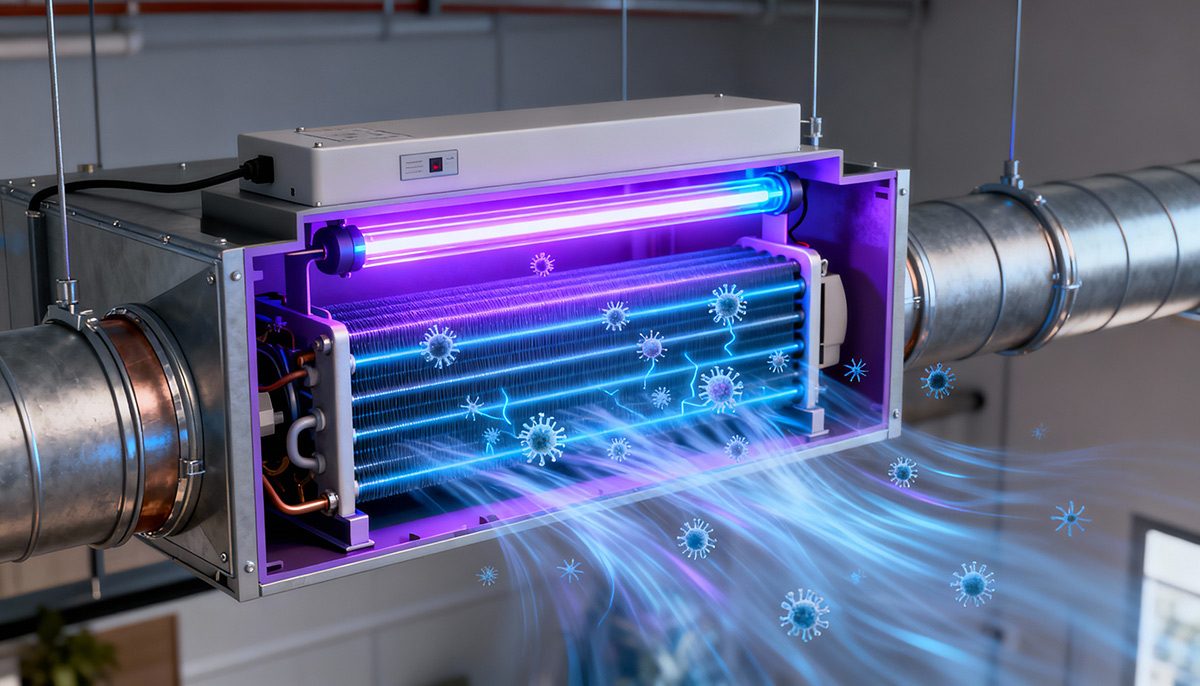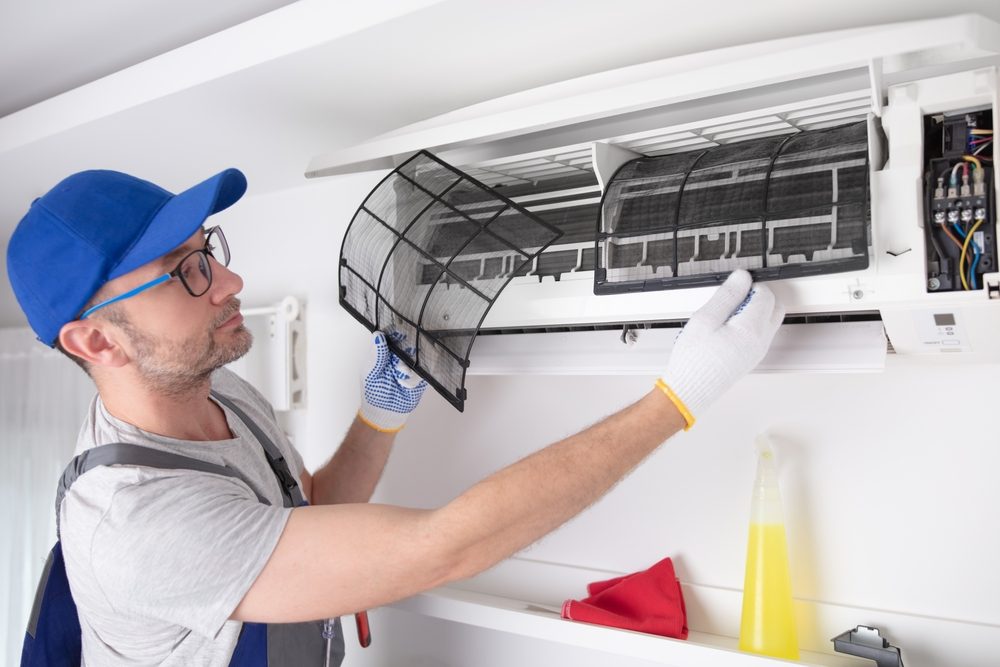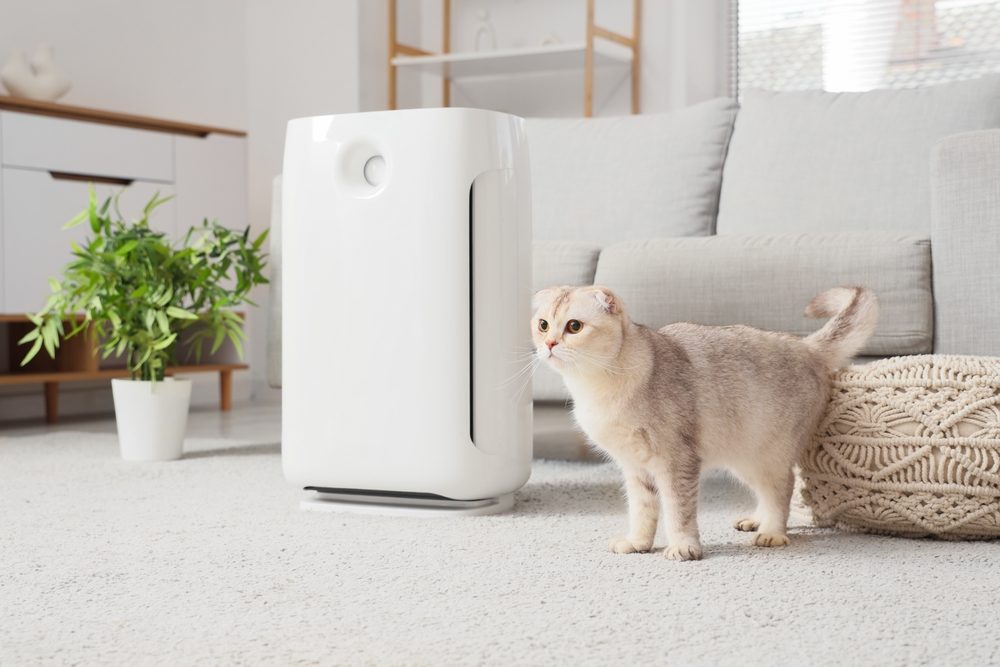
You will generally find water-cooled chillers in large commercial and industrial plants. They work by removing heat from a building by circulating chilled water through air handlers or fan coil units. From there, the heat is then released through a cooling tower.
Water cooled chillers are very efficient and can be used in small retail settings right up to large commercial usages. They are often used when very precise control of process cooling is needed. Daikin offers a full range of chillers to meet every requirement – from small to large – and in all cases offering advanced technologies that optimise performance. Our water cooled chillers were developed under some of the toughest conditions in the world and offer the very best in efficiency and energy savings.
The demand for water-cooled chillers is set to increase – the global HVAC market was valued at $165.9bn in 2024 and is expected to grow to $256.9bn by 2032. So in this article, we will cover what you need to know about these units as our experts break down exactly what water cooled chillers are, their core components, why they have so many clear benefits, as well as how best to maintain them. So let’s get started.
What are water-cooled chillers?
Water-cooled chillers are a kind of cooling system. They use water (hence the name) to remove heat from a space such as a warehouse or from a process such as one used in manufacturing. They work by circulating chilled water through a closed loop. This loop absorbs heat before transferring it to a condenser where it is released using a cooling tower. Because the water cooled chiller uses water as the way it transfers heat, it’s a great option for large facilities where an air-cooled system may not be sufficient.
A number of components make up a water cooled chiller, but four of the most important are:
Compressor: This compresses refrigerant and drives the cooling cycle.
Evaporator: Absorbs heat from the circulating water.
Condenser: This releases absorbed heat into water from the cooling tower.
Expansion valve: Regulates refrigerant flow for optimal performance.
Advantages of water-cooled chillers
There are a number of key advantages of water-cooled chillers: higher efficiency, longer service life, quieter operation, and suitability for demanding applications. Let’s look at these in more detail:
High efficiency: Because water is a better conductor for heat compared to air, the water-cooled chiller tends to be much more energy efficient than an air-cooled one. In fact, they can be up to 10 - 15% greater in terms of efficiency.
Longer lifespan: These systems generally last longer because they are indoors and so don’t get battered by the weather. This helps increase the lifespan to 20 - 30 years as long as there has been proper maintenance, which is considerably more than the usual 15 - 20 years for an air-cooled unit.
Quieter operation: Water-cooled chillers are less noisy because the cooling tower and other components are not in areas where there are people present. So they’re particularly well suited to hospitals, offices, and residential towers.
Ideal for large projects: These systems can handle heavy loads so they’re the first choice for industrial plants, airports, and multi-storey commercial complexes where consistent performance is an absolute must.
Need help deciding if a water-cooled chiller is right for your project? Contact Daikin’s experts today for tailored guidance and energy-efficient solutions.
Applications of water-cooled chillers
Water-cooled chillers are used in office buildings, hospitals, manufacturing plants, and data centres. Because they are so reliable in delivering consistent cooling they are often used in critical environments. Let’s look at these potential applications in more detail:
Office buildings: High-rise office complexes use water-cooled chillers to create a stable indoor temperature so it’s comfortable for workers but also energy-efficient.
Hospitals: Healthcare facilities require precise climate control for patients, surgical theatres, and so on. Water-cooled chillers come into their own here as they offer the kind of reliability that hospitals must have – there is no option for downtime.
Manufacturing plants: Industrial processes tend to generate a lot of heat and so water-cooled chillers can manage these loads so the products being produced retain their high-quality and the processes and equipment used in their creation is safeguarded.
Data centres: Servers generate a huge amount of heat around the clock with no downtime. This has only increased with the advent of AI. So water-cooled chillers along with advanced cooling towers form the backbone of modern data centre operations.
Maintenance and operational considerations
The key maintenance and operational considerations for water-cooled chillers include water treatment, regular inspections, monitoring efficiency, and ensuring correct installation.
Water treatment: Because water is central to the cooling process there needs to be proper chemical treatment to prevent scaling and corrosion as well as biological growth that could damage components and reduce efficiency.
Regular inspections: Maintenance will help avoid breakdowns that cost time and money. This maintenance should include cleaning condenser tubes, checking refrigerant levels, and testing pumps.
Monitoring energy efficiency: Using sensors and smart monitoring platforms lets facility managers track real-time performance and cut costs as well as making sure they are compliant with building standards.
Correct installation: Professional design and setup are essential to make sure you get maximum efficiency out of your system. Even the most advanced system can be undermined by poor installation.
FAQs about water-cooled chillers
How do water-cooled chillers differ from air-cooled chillers?
The main difference is how they remove heat. Water-cooled chillers use water and a cooling tower, while air-cooled chillers release heat directly into the air.
Are water-cooled chillers more energy efficient?
Yes. Because water is a better heat conductor than air, you will find that water-cooled chillers achieve 10 - 15% higher energy efficiency.
What is the typical lifespan of a water-cooled chiller?
As long as you carry out regular maintenance, these systems can last 20–30 years. So they’re a good long-term investment for large facilities.
Do water-cooled chillers require a cooling tower?
Yes. Cooling towers are essential for rejecting the heat absorbed by the chiller’s condenser water loop.
About Daikin
Daikin was founded in 1924 in Osaka, Japan and has since grown into the world’s leading HVAC manufacturer with nearly 100,000 employees worldwide. The company is recognised for innovation, reliability, and eco-efficient technologies.
Daikin’s water-cooled chillers are trusted across industries whether that’s skyscrapers in Dubai to manufacturing plants in Europe because they deliver high performance with reduced energy consumption. In 2024 alone, Daikin expanded its R&D team by 15% to pioneer next-generation refrigerants and advanced digital monitoring tools.
Get in touch with Daikin today.



